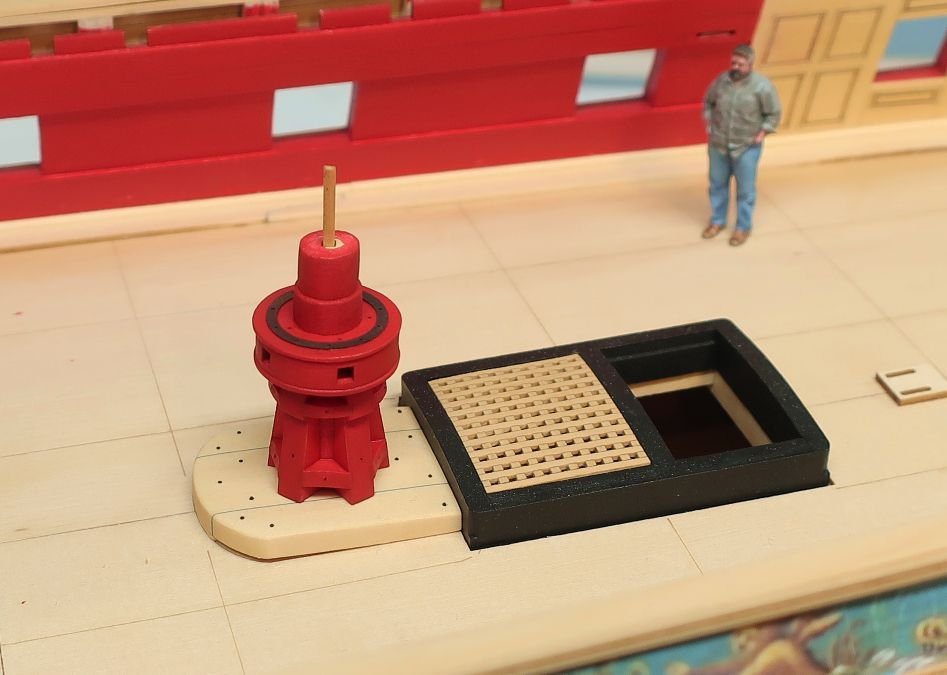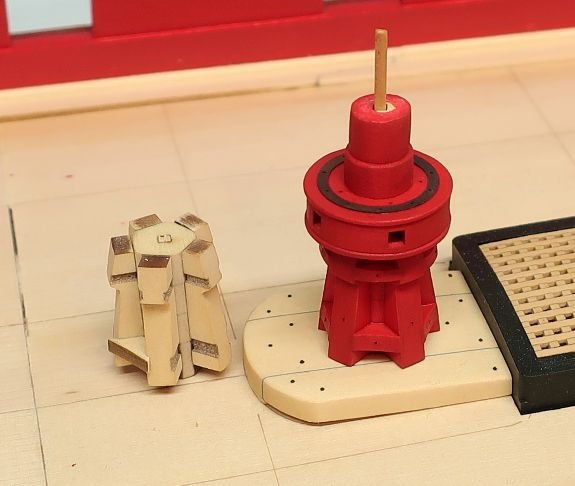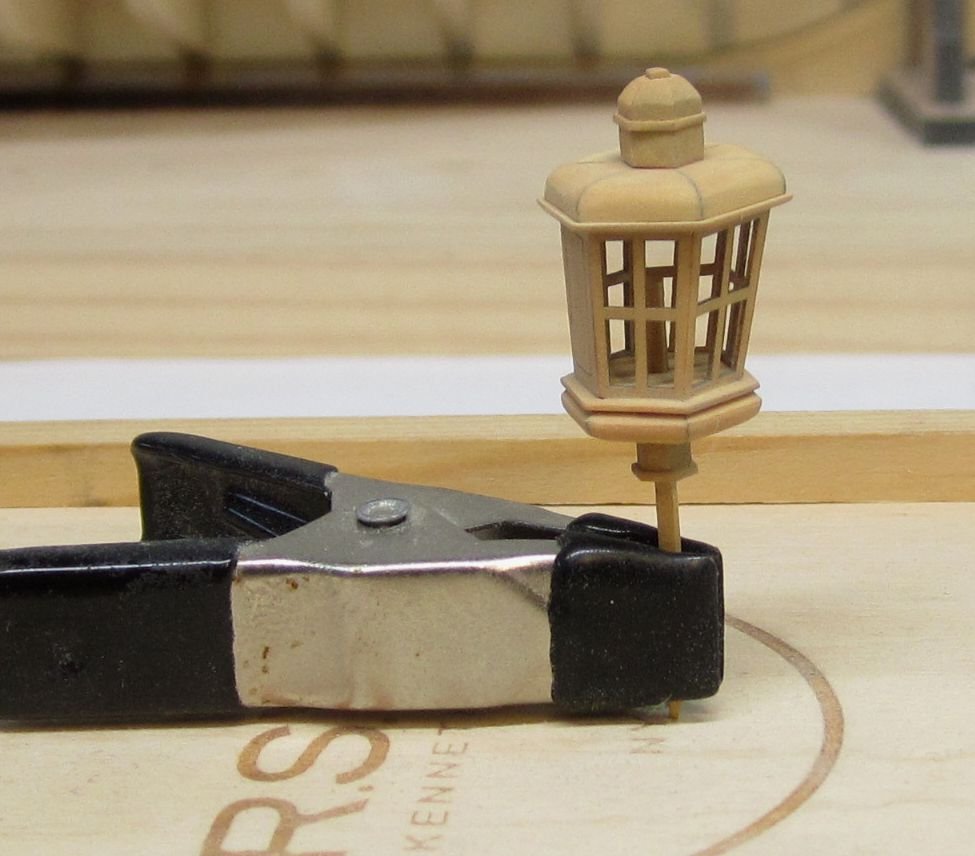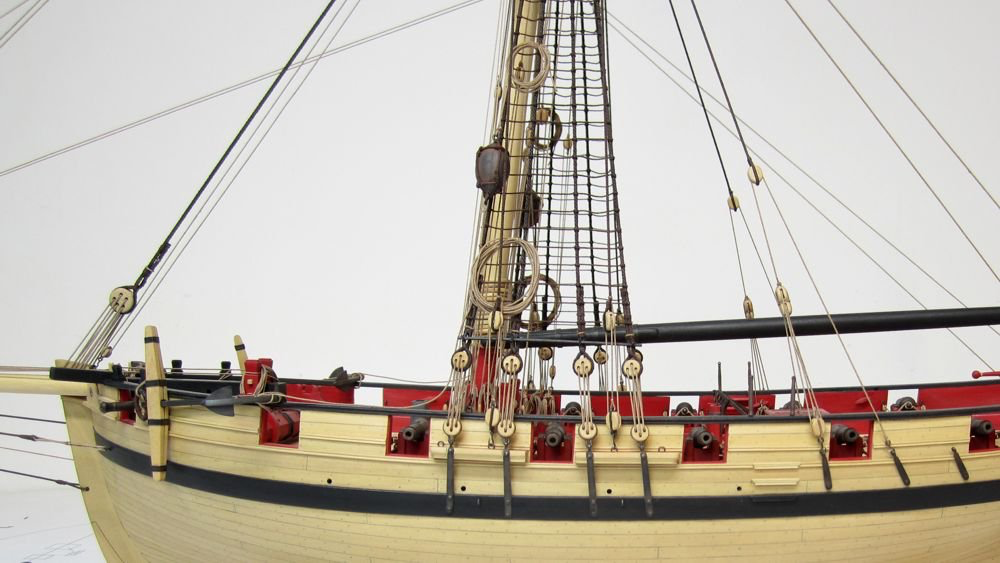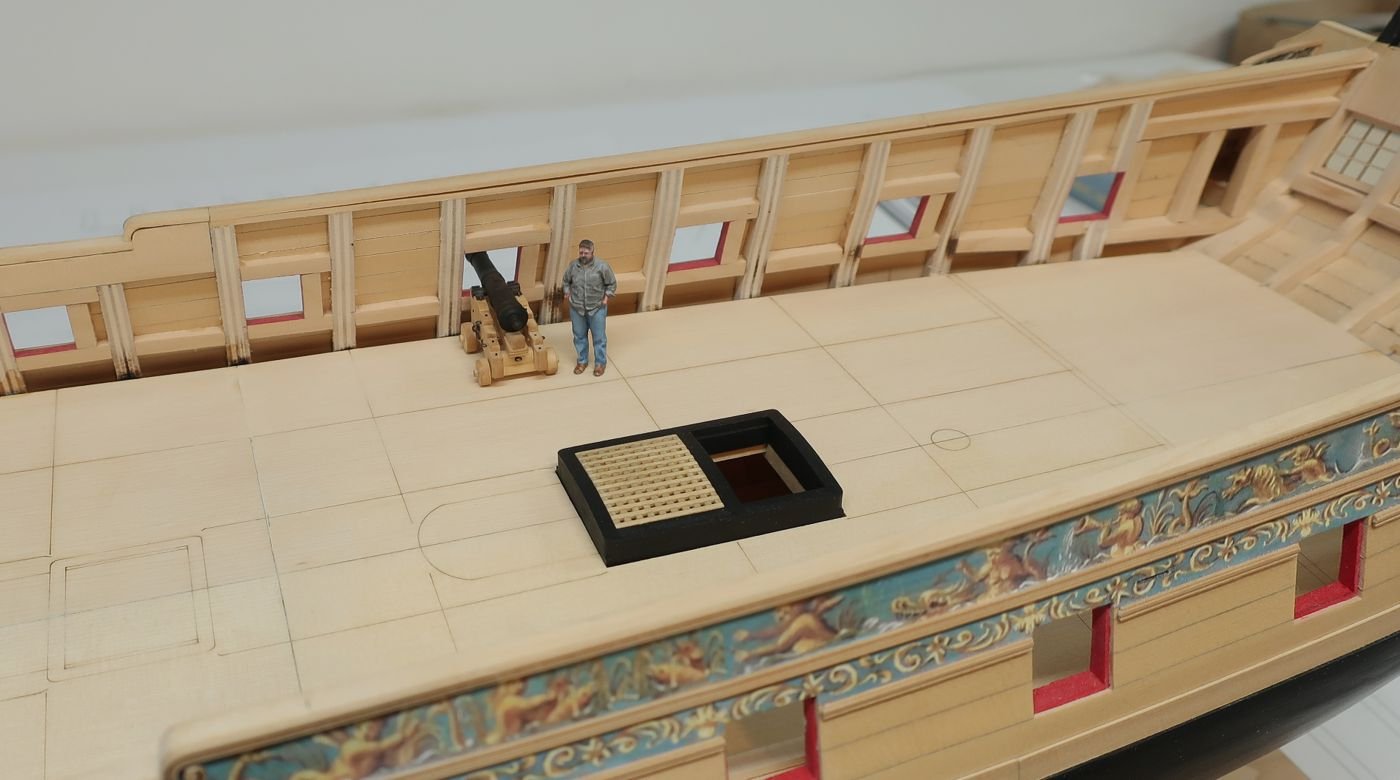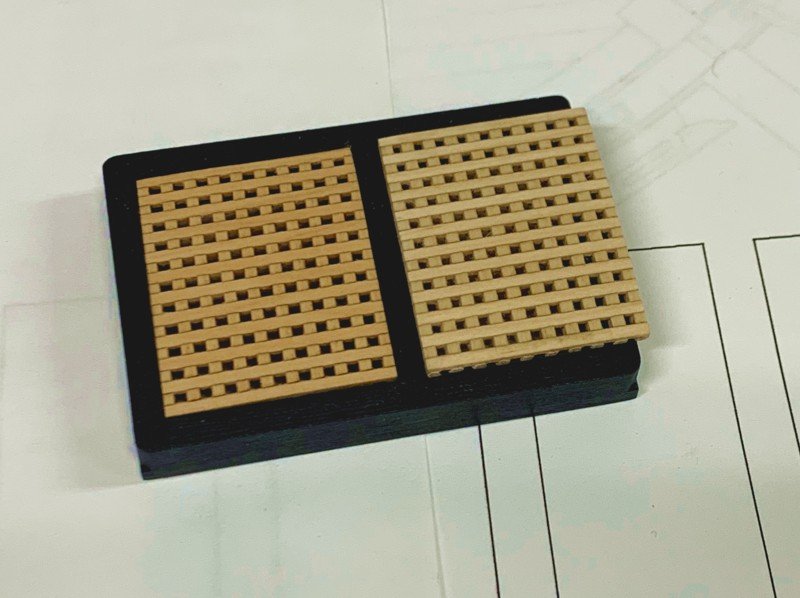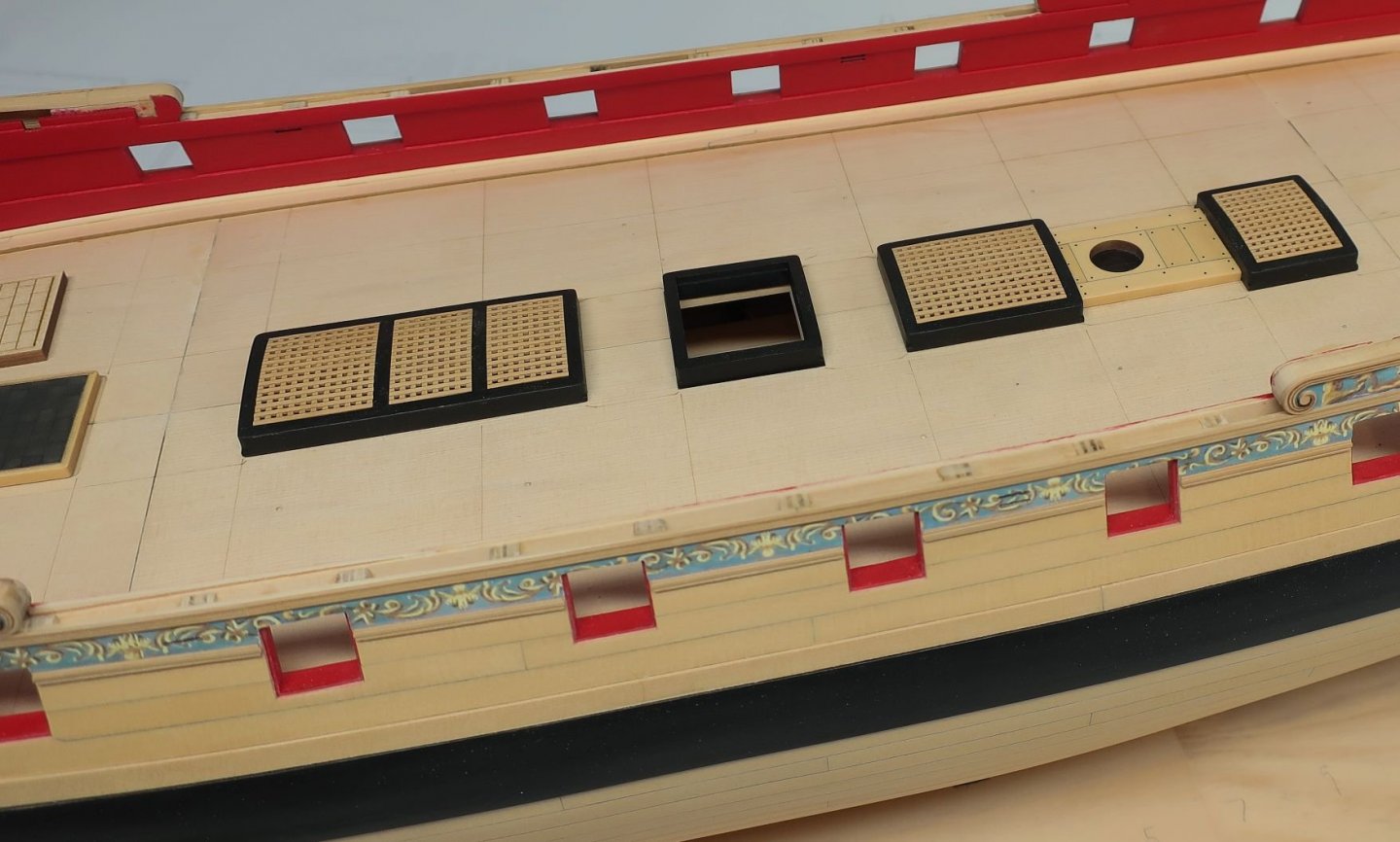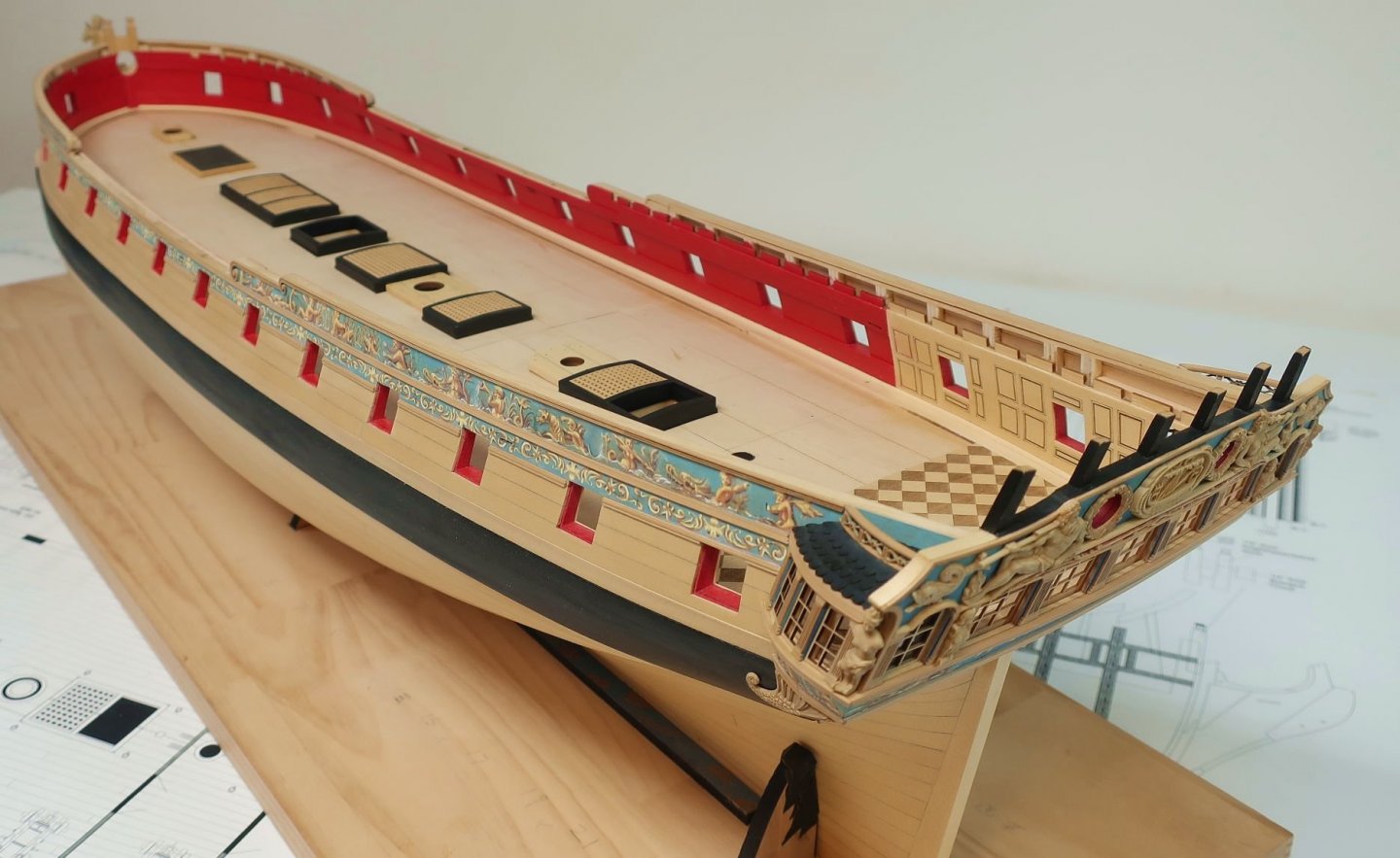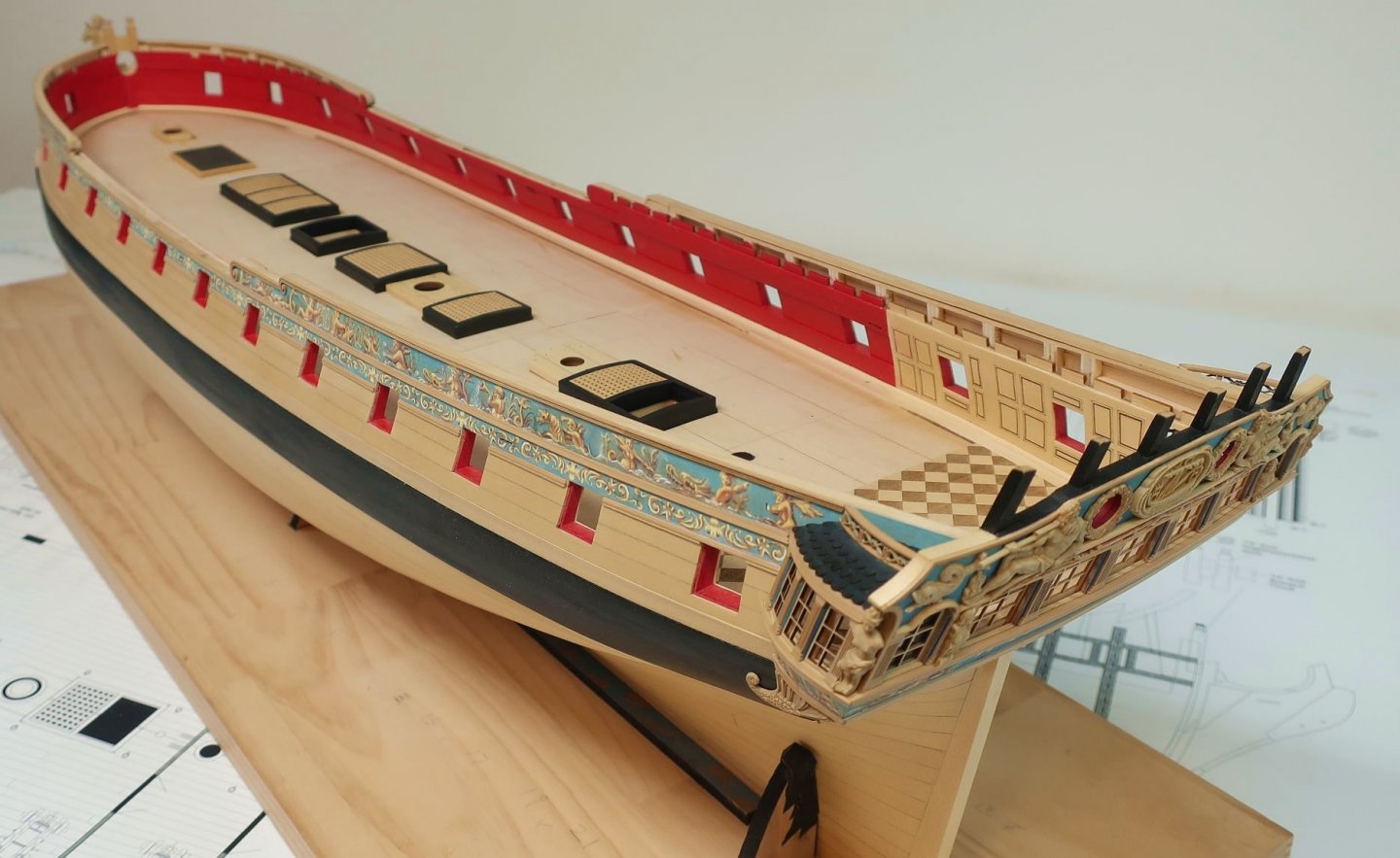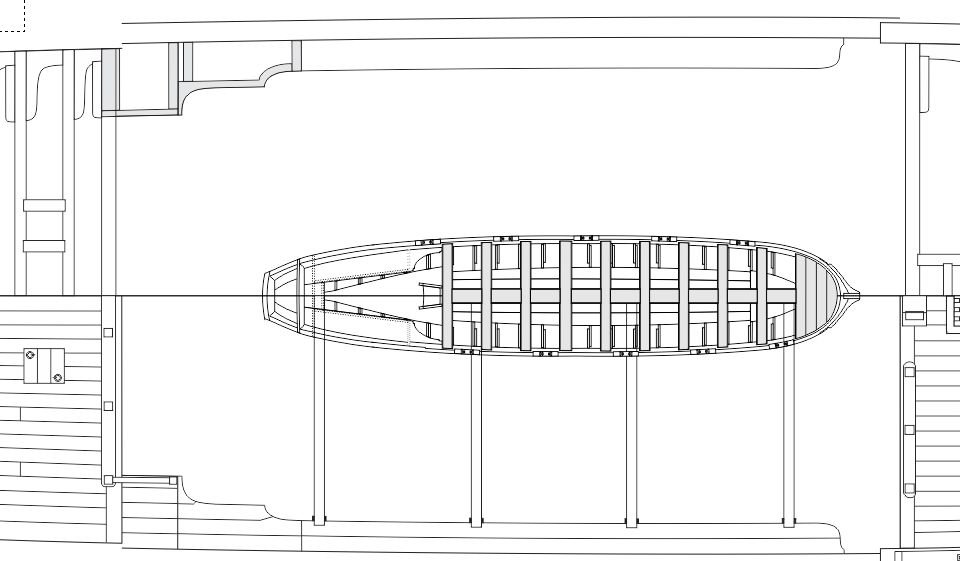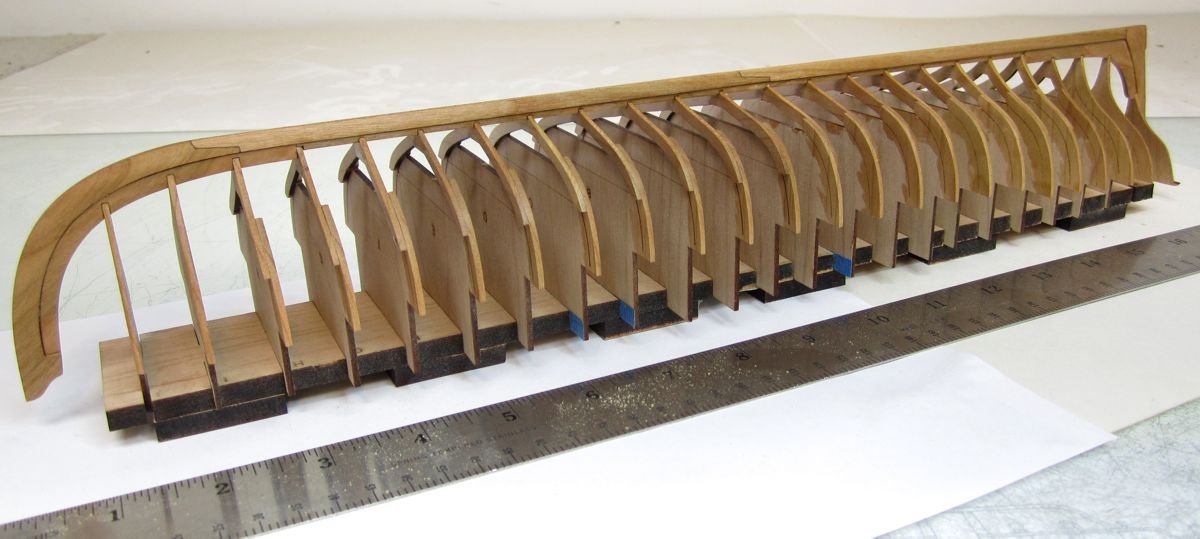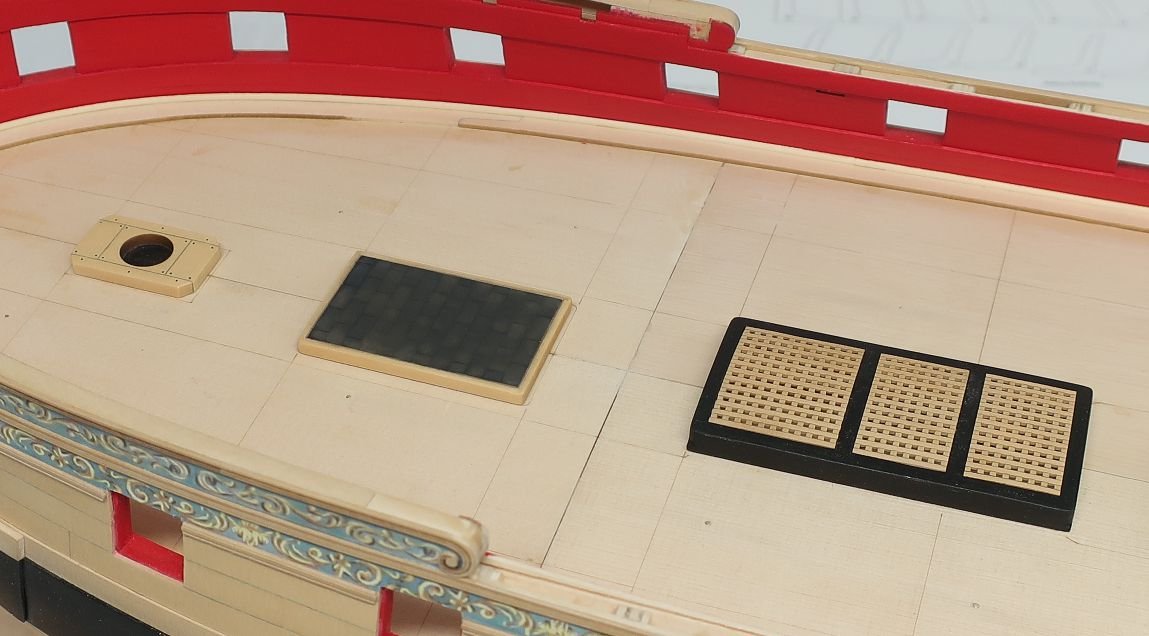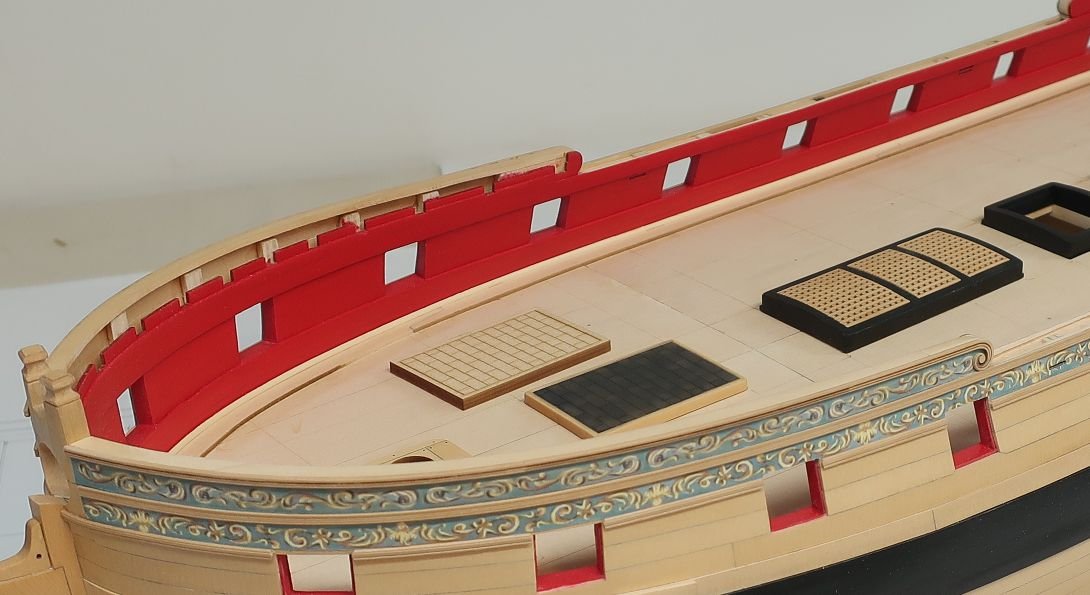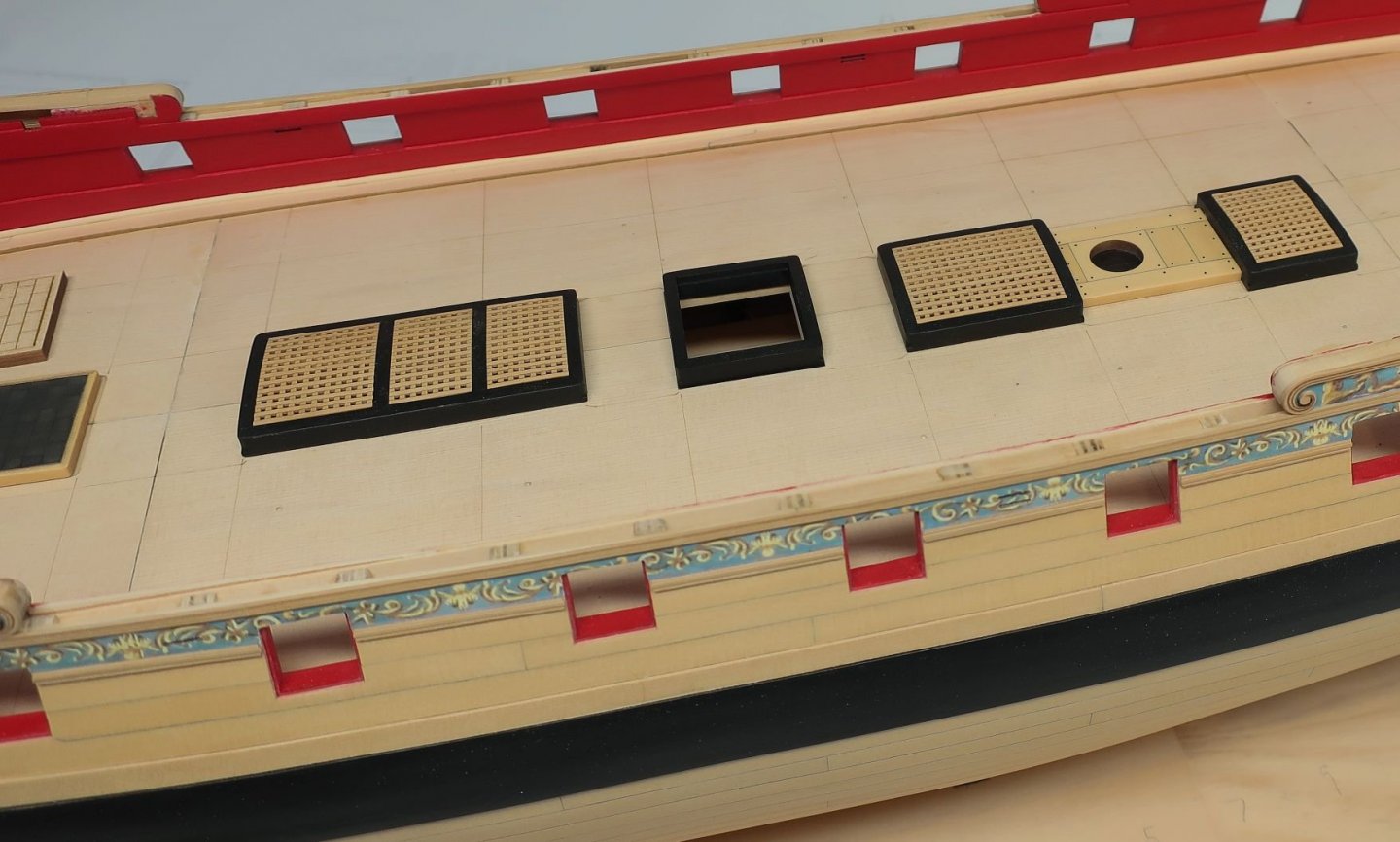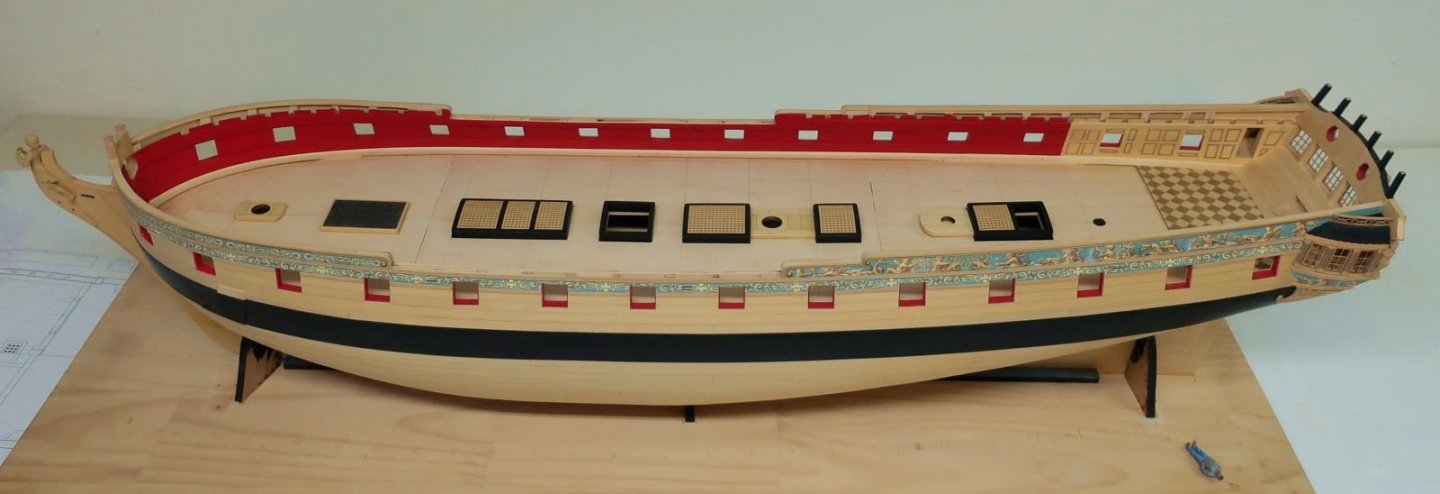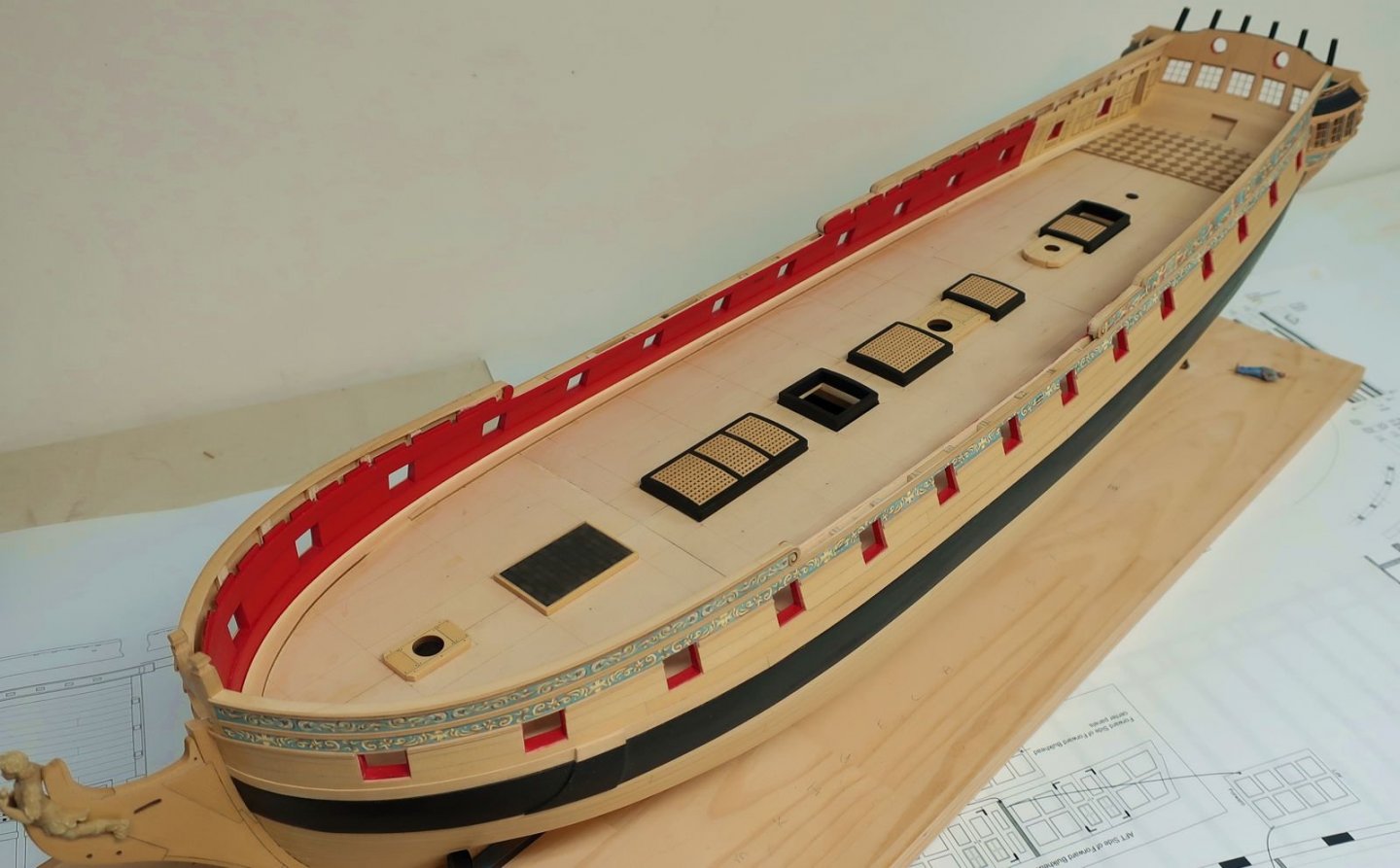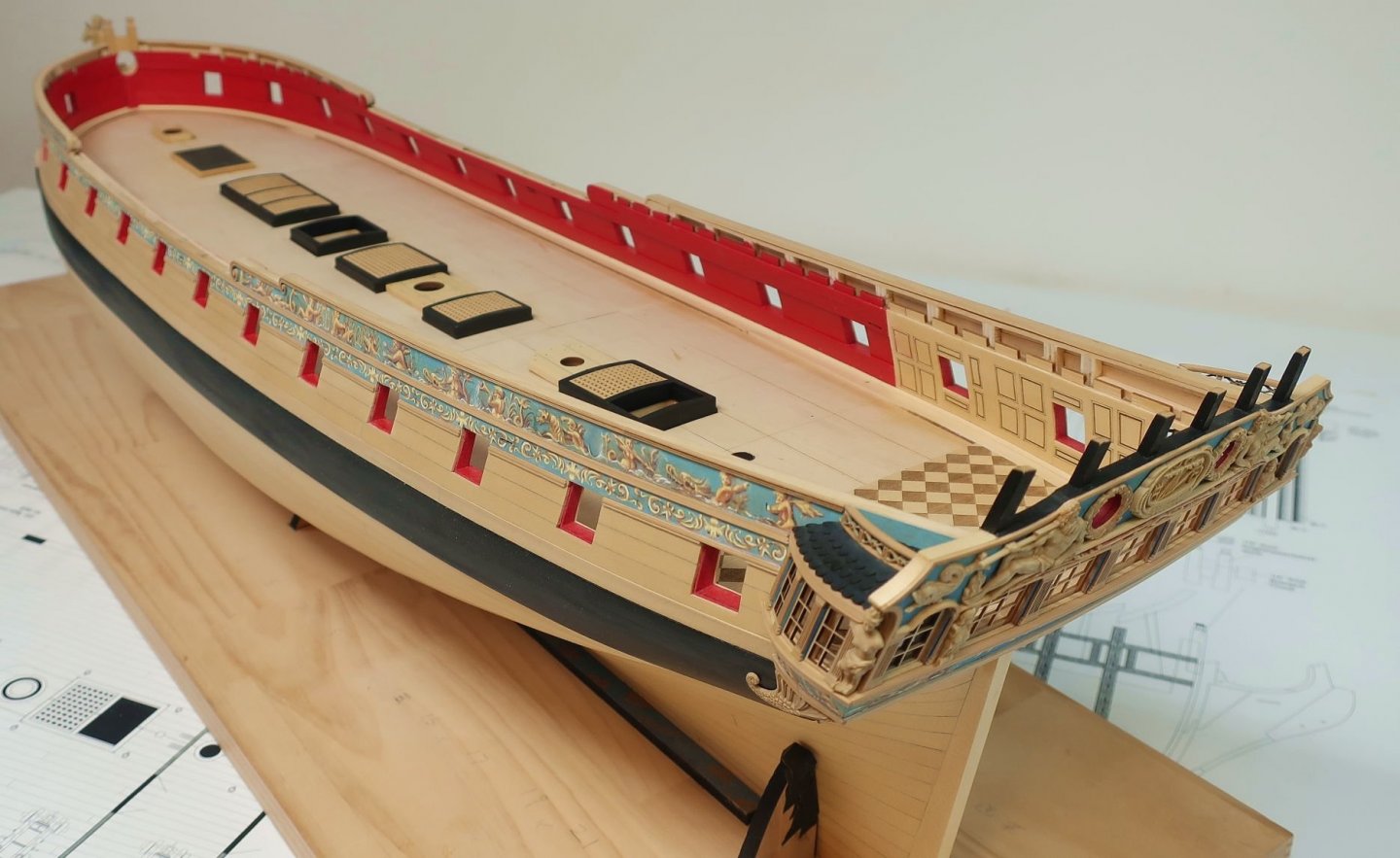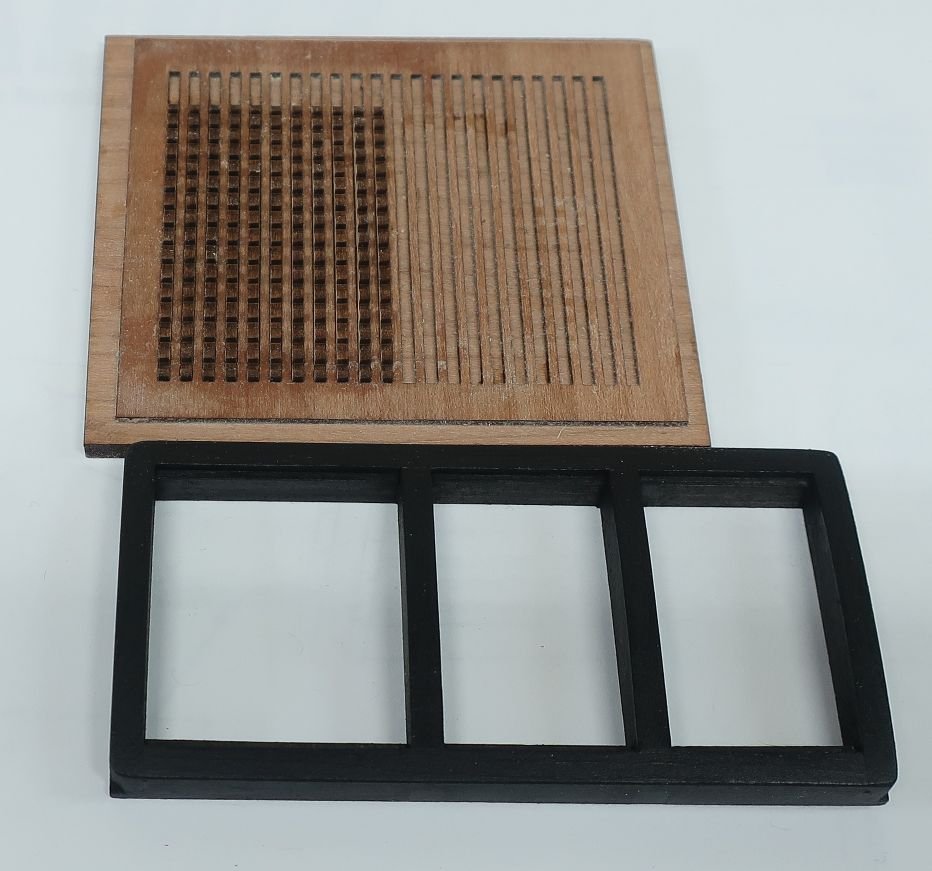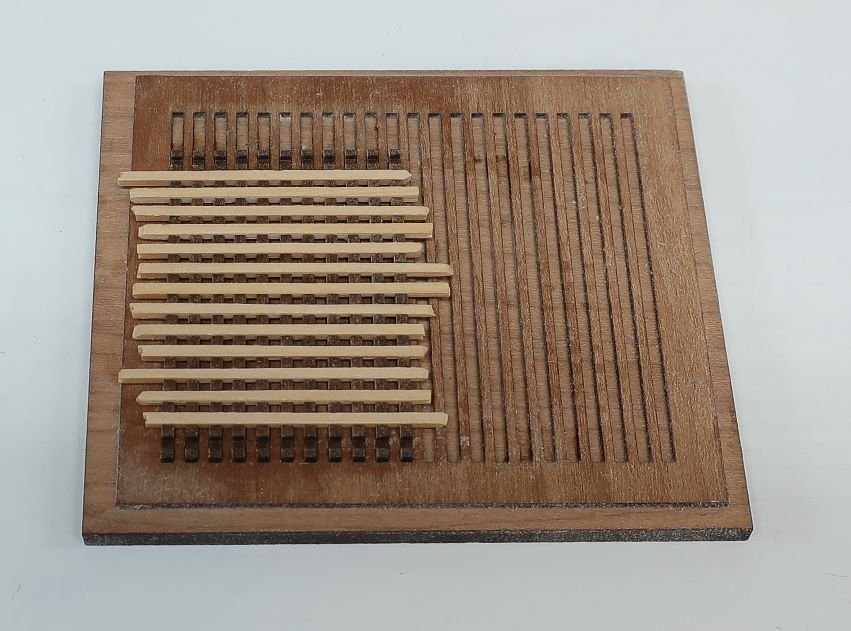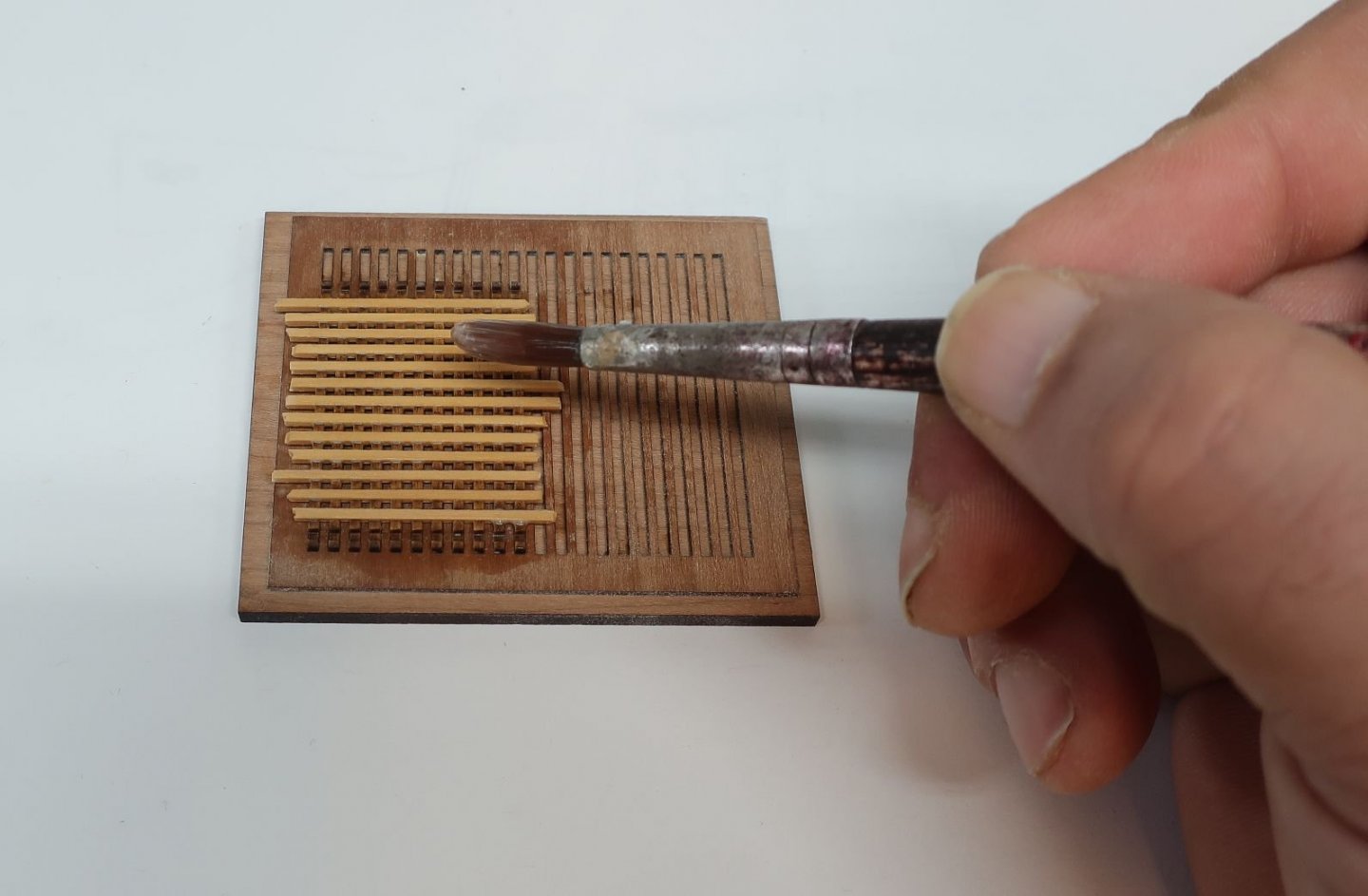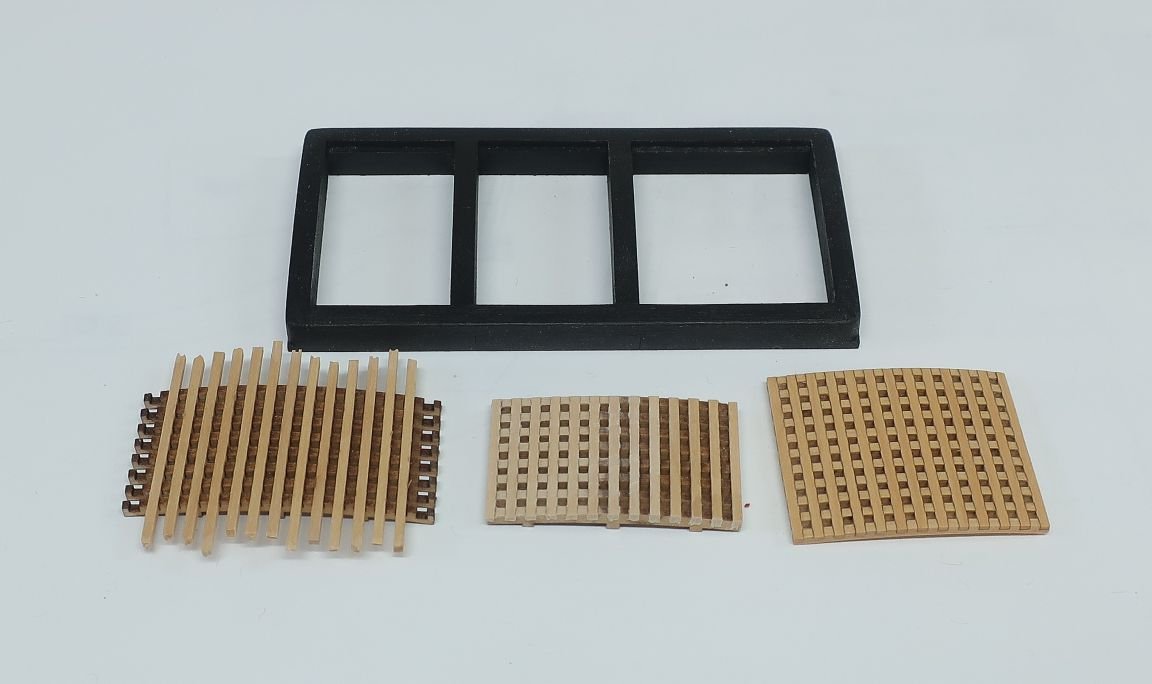-
Posts
9,702 -
Joined
-
Last visited
Content Type
Profiles
Forums
Gallery
Events
Everything posted by Chuck
-
Capstan experiment one. I got bored and burnt out making inventory items. So I decided to test out my parts for making the lower capstan. I have had the parts laser cut for a while. I didnt take any construction photos as this was just a test but keep in mind this is way before we will actually need it. I am always just a little ahead with the design stuff. So I will make another and document each step. I want to make the center spindle a bit heavier that goes between decks above the capstan drum. So I will tweak that before I make a new one. But what I wanted to show you guys is how I did it. I tried a new design for fitting the chocks into the whelps. Below you can see my very first proof of concept testing to see if I could laser etch notches on both sides of the whelps. It worked beautifully. So all you need to do is slide the chocks in after test their fit. This was a challenge even at this scale because these parts are still pretty tiny. The other parts including the capstan drum are all built as usual in layers on a 1/16" x 1/16" stick to register them. Very similar to the way I designed the stern lantern mini-kit for the winnie. This was a fun mini kit to build and will look great painted or left natural. I will detail its construction in Chapter 5.....sorry to jump the gun. I couldnt help myself. These will be made available as stand alone mini kits in 1/4" scale and 3/16" scale as well.
- 1,784 replies
-
- winchelsea
- Syren Ship Model Company
-
(and 1 more)
Tagged with:
-
- 160 replies
-
- cheerful
- Syren Ship Model Company
-
(and 1 more)
Tagged with:
-
I am not sure what you are referring to but yes there are eyebolts between the chainplate straps.
- 160 replies
-
- cheerful
- Syren Ship Model Company
-
(and 1 more)
Tagged with:
-
Funny...I will add one. Its my last vise. I cant seem to quit. Yes, she will have guns. Prototype below. But with the carriages painted red. I havent decided on how many yet. She was supposedly launched with 26 twelve pounders and 6 six pounders. But my research indicates that during the revolution she carried 24 twelve pounders and 8 six pounders. I am leaning towards the later because that is the time period I am building. It also allows me to show the last gunport closed which I prefer and also having 6 quarter deck guns and 2 f'castle guns.
- 1,784 replies
-
- winchelsea
- Syren Ship Model Company
-
(and 1 more)
Tagged with:
-
Thanks....indeed it holds a close resemblance. I am sad to say. LOL. It freaks out my kids when they see it. Chuck
- 1,784 replies
-
- winchelsea
- Syren Ship Model Company
-
(and 1 more)
Tagged with:
-
Its from shapeways. I just browsed 1/48 scale figures and picked a few. Then a friend of mine painted them.
- 1,784 replies
-
- winchelsea
- Syren Ship Model Company
-
(and 1 more)
Tagged with:
-
Well done...that looks really good. You should be very happy with those results.
- 137 replies
-
- winchelsea
- Syren Ship Model Company
-
(and 1 more)
Tagged with:
-
Jim she looks good!!! I can tell your having fun with project. It might be a bit of wait for the chapter 4 stuff as I am not finished with it myself. I cant believe you actually caught up to me..... Chuck
- 105 replies
-
- winchelsea
- Syren Ship Model Company
-
(and 1 more)
Tagged with:
-
Sure the lighter one is cedar.....other than the slight color difference they both look and perform the task beautifully. Keep in mind I just took this with my phone. But you get the idea. Chuck
- 1,784 replies
-
- winchelsea
- Syren Ship Model Company
-
(and 1 more)
Tagged with:
-
I forgot to mention that I will not be drilling the deck for the masts since there wont be any. I simply painted the circles black on the false decking. The partners are really thick and then there will be the mast coats so these holes will be pretty deep. So it will look nice and neat this way and nobody will ever know. AND they are so deep that if anyone was crazy enough to rig her, that they would be sufficiently deep enough to stick your masts into.
- 1,784 replies
-
- winchelsea
- Syren Ship Model Company
-
(and 1 more)
Tagged with:
-
Looks good but that window glazing will get so dusty on the inside and impossible to clean. I wouldnt add it until much much later. No need to do it now at all. I have also just switched to black on the top of the roof after much contemplation. It looks better to my eye and make the fancy rail stand out much more. See the photo below. Something to consider. Chuck
-
I am not even sure this thing as designed can be built. It is only 8" long. But I basically drafted it exactly like my barge kit. The only difference difference is it will be carvel planked. But I drafted it with frames to be built in a jig just like the barge kit which is 19" long. I must be nuts trying to build it with floors and futtucks. I may change that but I am curious if it can be done. What do you think???? Too ambitious. It will certainly be a detailed almost stand alone kit.
-
Thanks guys. Yes I am aware of that stove. I am not sure it would fit perfectly but I guess it wouldnt hurt to try. Its a bit a cheat though....especially since we should at least try and build one. Having it all done like that defeats the purpose in my opinion. It doesnt have to be made from scratch but it should at least be made....not just painted and stuck on the model. Just my opinion though.
- 1,784 replies
-
- winchelsea
- Syren Ship Model Company
-
(and 1 more)
Tagged with:
-
I am going to use 1/4” wide planks. But for those who prefer a slightly narrower look you can go with 7/32”. They will be 3/64” thick. You will need a few 5/16” wide plans also for cutting the scarph joints and tabbed deck planks every now and again.
- 1,784 replies
-
- winchelsea
- Syren Ship Model Company
-
(and 1 more)
Tagged with:
-
I have completed all of the partners and coamings......I can almost start planking the deck now. I forgot one last detail which I will show you guys soon. But here are some pics. The foremast partners are made from laser cut parts and then I added the bolts. I used 15 pound filament for those. Use a #75 drill bit for the holes. You can also see the base plate for the stove. You have a few options with this. I have laser cut a nice base for you. At this time the base was most likely just a large iron plate....but in some cases they used flagstone or slate. If you want to depict the iron plate....just flip it over and paint it matte black. But if you want to show some slate or flagstones, I have laser etched the other side with a stone tile pattern. Simply paint it matte black first but keep the coaming natural. Then use some weathering powders on the tiles to make them only slightly lighter. Leave the etched grout lines (which are deeper) dark black. But use some grays and rust colors to make a subtle stone base. Dont over do it!!! The main mast partners were done the same as the fore mast partners. None of these are glued in position yet but I will be doing so soon!!! Any comments or questions!!!!!!!
- 1,784 replies
-
- winchelsea
- Syren Ship Model Company
-
(and 1 more)
Tagged with:
-
Back to the Winnie.... To make the gratings for the gun deck you will need 3 packages of my cambered grating mini kits. I will not be including these in the package for chapter 4 because I sell them in either cedar (less expensive) or boxwood. Both would work and you guys can choose. You will also need the grating jig. One jig should last you the entire project. To start, figure out how many cambered laser cut grating strips you will need to fit the space in your coaming. Only build what you need. For example this grating below on left side needed just seven grating strips in the jig. My coaming were designed so each grating will fit perfectly when finished. So dont use more than the space needs. Then use the supplied strips and press them into the notches carefully. You will notice they will probably be too tight at first. This is by design. You need to run some sandpaper down the strip until it becomes a nice press-fit into the notches. Once again only use the number of strips you need. In this case 13 strips pressed firmly in position... At this stage you should look it over to make sure no grating strips went crooked while you were fitting the batten strips. If they did your holes wont be equal in shape and size. Fix those now using a toothpick if they lean over. Its easy to do. Then paint on some watered down tite-bond. Get it in all the nooks and crannies. Not too thick. If the holes start clogging....add more water. Wait about 2 minutes but not so long that the glue will dry. You want to carefully pry the grating free of the jig before it dries and is glued to the jig!!! Then clean up the jig for the next grating. But you are not done yet. Brush more glue on the bottom underside of the grating. Set it aside to dry fully. Now you are probably saying.... how in world will these ugly dirty gratings look good. Right now they look awful. Snip off the excess from the perimeter and file the sides smooth. Check the fit in the coaming. Then start sanding the top surface. In the center photo below you can see I have sanding that grating only on one side. The finished grating can be seen coming to light. The one on the right is completed. These are cedar gratings by the way. Now should you sand the bottom too? You dont have to.....BUT, I am sure you have seen those contemporary models and have seen how thin they are. I wouldnt recommend going too thin. But it does change the way the grating looks in the coaming. And here are the finished coamings with the gratings in position. ANY QUESTIONS????
- 1,784 replies
-
- winchelsea
- Syren Ship Model Company
-
(and 1 more)
Tagged with:
-
Thanks.....I have all that plus much much more. The research is well under way.
- 1,784 replies
-
- winchelsea
- Syren Ship Model Company
-
(and 1 more)
Tagged with:
-
Im just really bored with seeing so many Syren kits getting built. Since there is a huge lack of American ships on the market that are any good I figured I would rectify that situation. All you ever see are Syren and Constitution kits being built for the most part.....and the occasional Hahn colonial schooner. Time to diversify as there are so many to choose from.
- 1,784 replies
-
- winchelsea
- Syren Ship Model Company
-
(and 1 more)
Tagged with:
-
ship rigged Hornet...built to the lines of Wasp as she appeared in 1812. I believe 10 ports per side.
- 1,784 replies
-
- winchelsea
- Syren Ship Model Company
-
(and 1 more)
Tagged with:
-
Thats the only reason why I personally want to do this POF cross section. Its fun for me to solve those design issues. In fact....since those pics were taken I have simplified and changes the frame design slightly. The improved versions are even easier to build and assemble. Chuck
- 1,784 replies
-
- winchelsea
- Syren Ship Model Company
-
(and 1 more)
Tagged with:
About us
Modelshipworld - Advancing Ship Modeling through Research
SSL Secured
Your security is important for us so this Website is SSL-Secured
NRG Mailing Address
Nautical Research Guild
237 South Lincoln Street
Westmont IL, 60559-1917
Model Ship World ® and the MSW logo are Registered Trademarks, and belong to the Nautical Research Guild (United States Patent and Trademark Office: No. 6,929,264 & No. 6,929,274, registered Dec. 20, 2022)
Helpful Links
About the NRG
If you enjoy building ship models that are historically accurate as well as beautiful, then The Nautical Research Guild (NRG) is just right for you.
The Guild is a non-profit educational organization whose mission is to “Advance Ship Modeling Through Research”. We provide support to our members in their efforts to raise the quality of their model ships.
The Nautical Research Guild has published our world-renowned quarterly magazine, The Nautical Research Journal, since 1955. The pages of the Journal are full of articles by accomplished ship modelers who show you how they create those exquisite details on their models, and by maritime historians who show you the correct details to build. The Journal is available in both print and digital editions. Go to the NRG web site (www.thenrg.org) to download a complimentary digital copy of the Journal. The NRG also publishes plan sets, books and compilations of back issues of the Journal and the former Ships in Scale and Model Ship Builder magazines.




